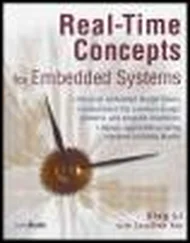Democracy is a well known political concept that empowers all eligible individuals to play an equal role in decision making. In recent years, this has been widely applied to other areas. For example, Thomas Friedman argues in (Friedman 2005) that the era of globalization has been characterized by the democratization of technology, the democratization of finance, and the democratization of information. These ideas have already started impacting the way commerce is conducted, societies are governed, children are educated, etc.
The most fundamental features of a democratized society include the rule of law and legal equality. The rule of law implies that every individual is subject to the law and legal equality implies that all individuals are equal and should be treated equally. In order to realize the democratization of power systems, there is a need to realize these two features while taking into account the fundamentals of power systems and democratized societies.
For power systems, one important fact is that it is not feasible to rebuild existing power systems from scratch because huge investment has been made into power systems over the last 100+ years. The ultimate solution should be to make millions of newly added heterogeneous players compatible with the grid and follow the fundamental principles of the current power systems. Hence, this is a compatibility problem, which is not much talked about in power systems but is common sense in information technology. For example, the invention of the MODEM solved the compatibility problem of computers with telephone systems and revolutionized the access of computers to telephone systems. The widespread usage of the USB interface made many devices, such as cameras, printers and phones, compatible with computers. There is a need to solve the compatibility problem for power systems, in order to accelerate the paradigm shift of power systems from centralized control of a small number of large facilities to democratized interaction of a large number of relatively small generators and flexible loads (Zhong 2017f). In other words, the rule of law for future power systems should follow the fundamental principle that has been established in current power systems.

Figure 2.1Examples of divisive opinions in a democratic society. (a) 2016 UK Brexit Referendum. (b) 2016 US presidential election.
For democratized societies, one fundamental fact is that individuals can have different or even divisive opinions (Brennan 2016; Grayling 2017). Figure 2.1illustrates two such examples: the 2016 UK Brexit Referendum and the 2016 US presidential election. There was no consensus in each case. If the democratization of power systems is implemented based on the current principles of democratized societies, it would sow the seeds of a systemic flaw for future power systems that may lead to system‐wide consequences. Arrow's Impossibility Theorem (Arrow 1951, 2012), named after the economist and Nobel laureate Kenneth Arrow, states that, when there are more than two distinct candidates, there does not exist a voting (democratic) system that can convert individual preferences about the candidates into a transitive, i.e. strictly ranked, order of community preferences under the following four fairness criteria:
(1) Universal admissibility: each individual can have any set of rational preferences.
(2) Unanimity: if every individual prefers candidate A to candidate B, then the community prefers candidate A to candidate B.
(3) Freedom from irrelevant alternatives: if every individual prefers candidate A to candidate B, then any change that does not affect this relationship must not affect the community preference for candidate A over candidate B.
(4) Non‐dictatorship: no particular individual can dictate the community preference with his own preference independent of others.
When each criterion is considered separately, the four criteria seem to be perfectly reasonable but, when all the four conditions are required at the same time, no voting systems that guarantee a rational consequence exist and nonsensical or clearly undemocratic consequences may appear. More dramatically, the first three conditions imply that there will be a dictatorship if a transitive order of group preferences is demanded. For this reason, the theorem is also known as the dictator theorem .
This offers a high‐level theoretical explanation why current power systems “dictated” by large power plants are stable. This also indicates that, after large power plants disappear, a democratized power system cannot guarantee its stability without introducing an additional mechanism for this. It is vital for all individuals to synchronize with each other to reach a consensus, i.e. to maintain frequency and voltage stability. Hence, future power systems will not only be democratized but also should be synchronized. This leads to the concept of synchronized and democratized (in short, SYNDEM) smart grids (Zhong 2017f). For such a SYNDEM grid, all active players, large or small, conventional or renewable, supplying or consuming, would follow the same rule of law and play the same equal role to achieve the same common goal, that is to maintain grid stability.
It is shown in (Zhong 2013b) that the synchronization mechanism of synchronous machines, which has underpinned the organic growth and stable operation of power systems for over 100 years, can continue serving as the rule of law for SYNDEM smart grids. Moreover, the power electronic converters that are adopted to integrate different players can be equipped with the synchronization mechanism through control to achieve legal equality.
2.2 SYNDEM Rule of Law – Synchronization Mechanism of Synchronous Machines
There are different power plants, such as coal‐fired, nuclear, and hydro power plants, in existing power systems. However, electricity generation is dominated by only one type of electrical machine – synchronous machines. The reason why the industry has decided to adopt synchronous machines while there are different types of electric machines is because synchronous machines have an inherent synchronization capability. This can be understood by looking at the mathematical model of synchronous machines.
A synchronous generator, which is a synchronous machine operated as a generator, is governed by the swing equation
(2.1) 
where  is the rotor angle;
is the rotor angle;  is the angular speed of the machine;
is the angular speed of the machine;  is the mechanical torque applied to the rotor;
is the mechanical torque applied to the rotor;  is the moment of inertia of all the parts rotating with the rotor;
is the moment of inertia of all the parts rotating with the rotor;  is the friction coefficient; and
is the friction coefficient; and  is the electromagnetic torque
is the electromagnetic torque
Читать дальше



 is the rotor angle;
is the rotor angle;  is the angular speed of the machine;
is the angular speed of the machine;  is the mechanical torque applied to the rotor;
is the mechanical torque applied to the rotor;  is the moment of inertia of all the parts rotating with the rotor;
is the moment of inertia of all the parts rotating with the rotor;  is the friction coefficient; and
is the friction coefficient; and  is the electromagnetic torque
is the electromagnetic torque










